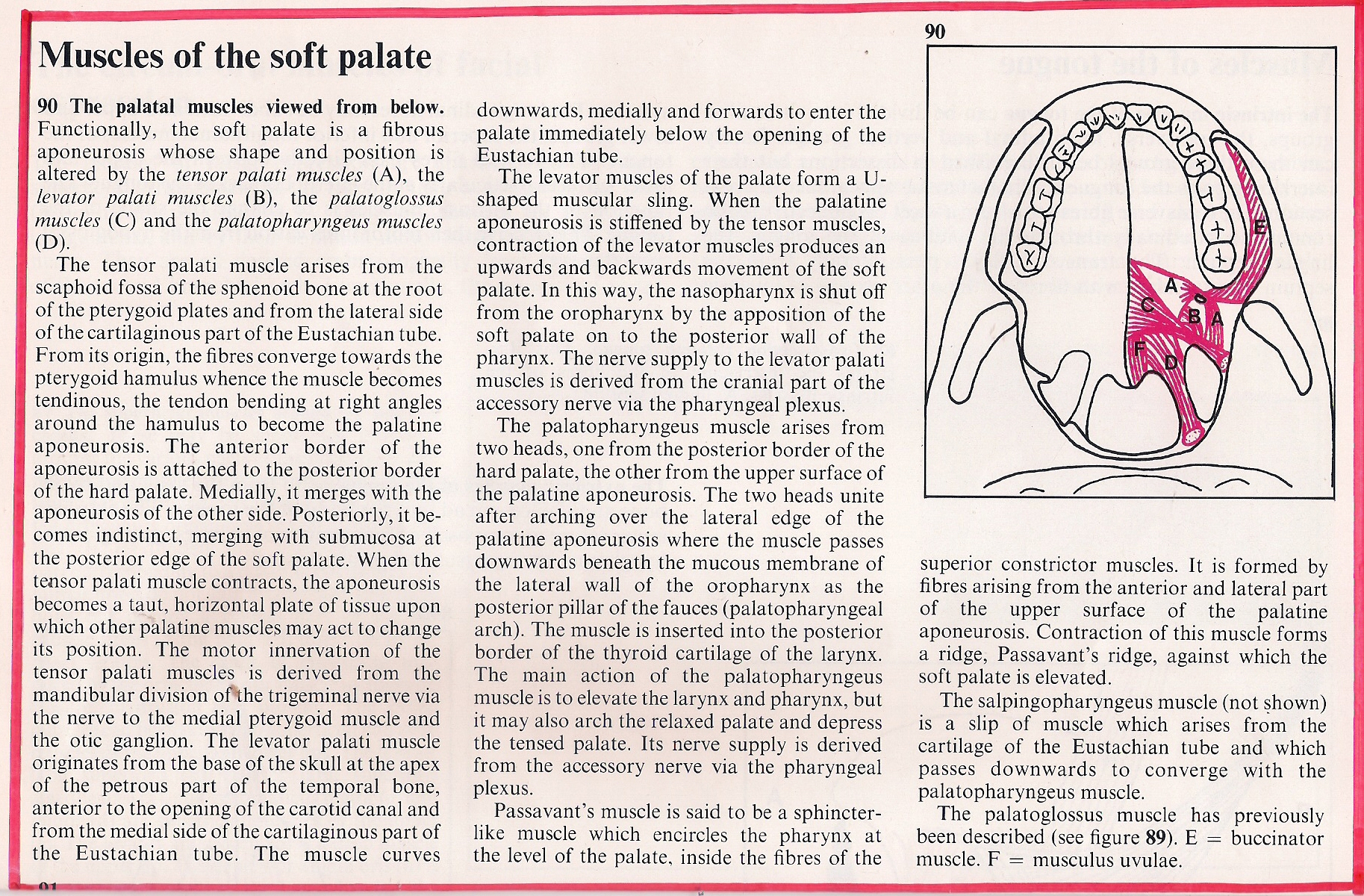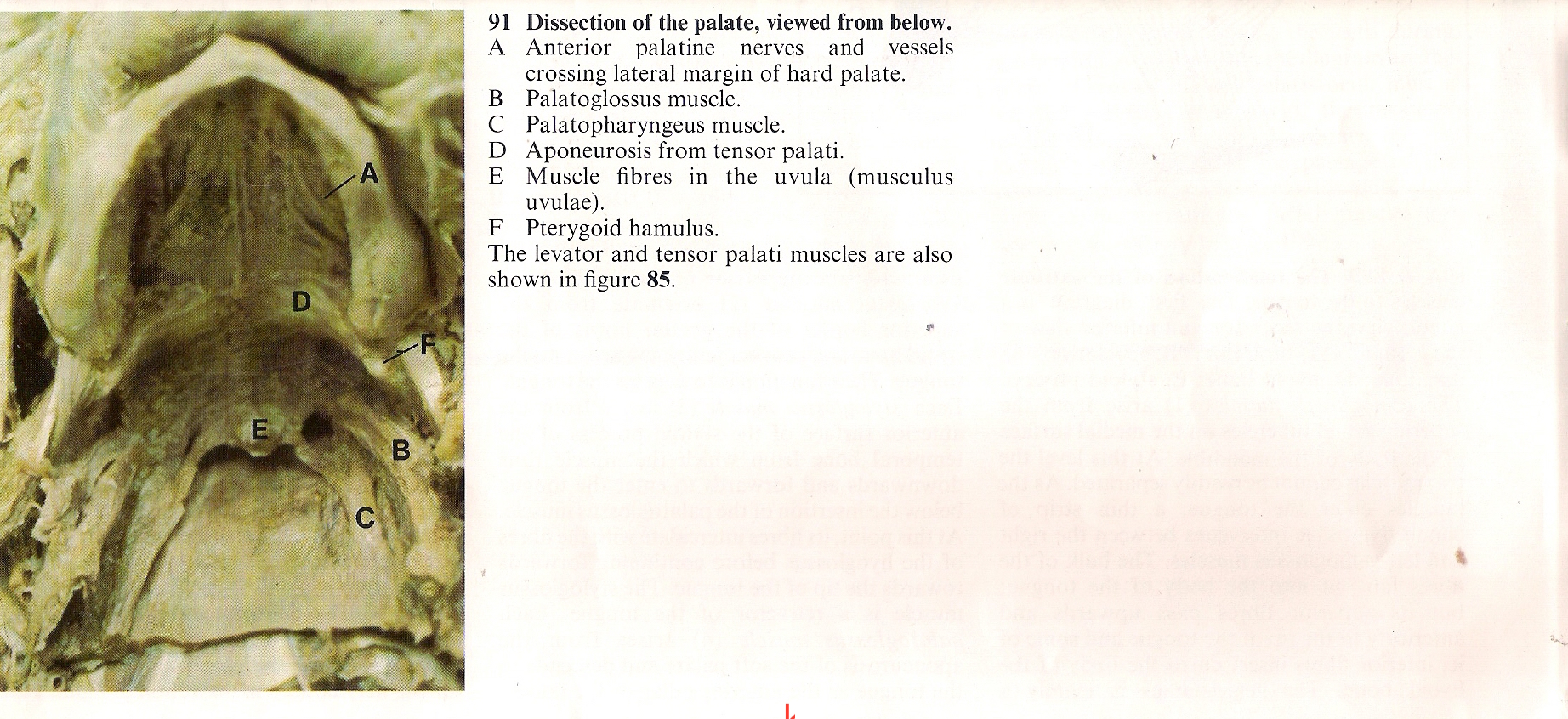11. De mondholte

11.9 Air leak nose exercises
Spieren van het zachte verhemelte waarvan een deel ook een functie hebben in de mondkeelholte.
Spieren die het zachte verhemelte afplatten zijn meer nodig bij het hoog spelen en/of hard spelen. En ..het slikken. Spieren die nodig zijn om een mooie ronde koepel te maken van het zachte verhemelte en mondkeelholte zijn meer nodig bij het lagere spel.


Gerelateerde klanken bij hoog en hard spelen
a, ee, ii etc.
Gerelateerde klanken bij lager spel
u, oo, of etc.
AIRLEAK NOSE REMEDY AND THERAPY
B) Therapy –Remedy.
To learn how much of air must travel through de nose cavity during brass (or woodwind) playing depending the circumstances of pitch, sound colour, dynamics and tone hight.
Necessairy are:
1. Perfect breathing in.
2. Breath support.
3. Moutpiece needs more lower jaw support (look at chapter 35).
4. Crown stretching (of the skull).
5. Avoid hyperlordosis of the cervical columna vertebrae (7.2).(hinders
swallowing).
Hyperlordosis can lead to higher tense of the pharynxconstrictors.
6. Take care of a good phonetic position of the mouthcavity and pharynx,
orientated on O, U a.s.o. and not on ee,ii,aa a.s.o.
7. Contract or tense the nose muscles (squeeze them) and continue with
breathing in and out. After that do the same with the mouthpiece.
8. A larger mouthpiece lowers the pressure in the mouthcavity and pharynx.
9. Training of the coördination of the soft palate muscles. Learn to relax them.
Important is the lowering of the pressure . Excellent breath support is necessairy.
Training of the constrictors of the pharynx and the antagonists of them.
To get a better control in the area of the soft palate and tongue in the same time let we see you the next exercises:
Compare and read also Circular breathing 34.2
11 A:
Shut the lipapertura and blow the cheeks puffed up with closed lipapertura.
Now try to breath through the nose.
If you succeed with this, keep your throat closed and press the air bit for bit out of the mouthcavity.
In the periodes between the blow out moments keep the lipaperture closed well.
Look at the video.
While you blow out the air through the lipaperture bit for bit, breathe deep in through the nose.
11 B:
Do the same exercise but…when you start to breath in through the nose contract and squeeze your nose-wing muscles.
11 C:
When you’ve reached that feel you try to breath in and out through the nose with contracted/ squeezed nose wing muscles. During this breathing are the soft palate constrictors and flatteners tense.
Look at the video.
11 D:
Finish exercise..Start again with 11 A, but …at the end of an inhalation through the nose, while you blow out the puffed cheeks, you shut the lipapertura en you try in the same time to press the air outward.
12:
Quot exercise.
Coördination and muscle strengthening for the soft palate flatteners, the soft palate elevators and the uvula.
Breath in your lungs half full and try to get the Q position of the tongue, with that you shut of the nose- and mouthcavity.
The back of the tongue shuts of the mouthcavity and pharynx both of them and now you try, in the same time, to press the air outward but than immediately inward into the trachea. And you try to keep the Q position of the tongue. Its also possible with the K-position of the tongue against the palate.
At this moment you’ve reached the point in which you have shut off the nose- and mouthcavity. Repeat this exercise with in- and nreathing out many times.
Take care of refreshing air moments between the exercises avoiding dizzyness or hyperventilation symptoms.
----------------------------------------------
|
